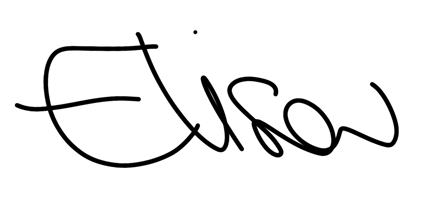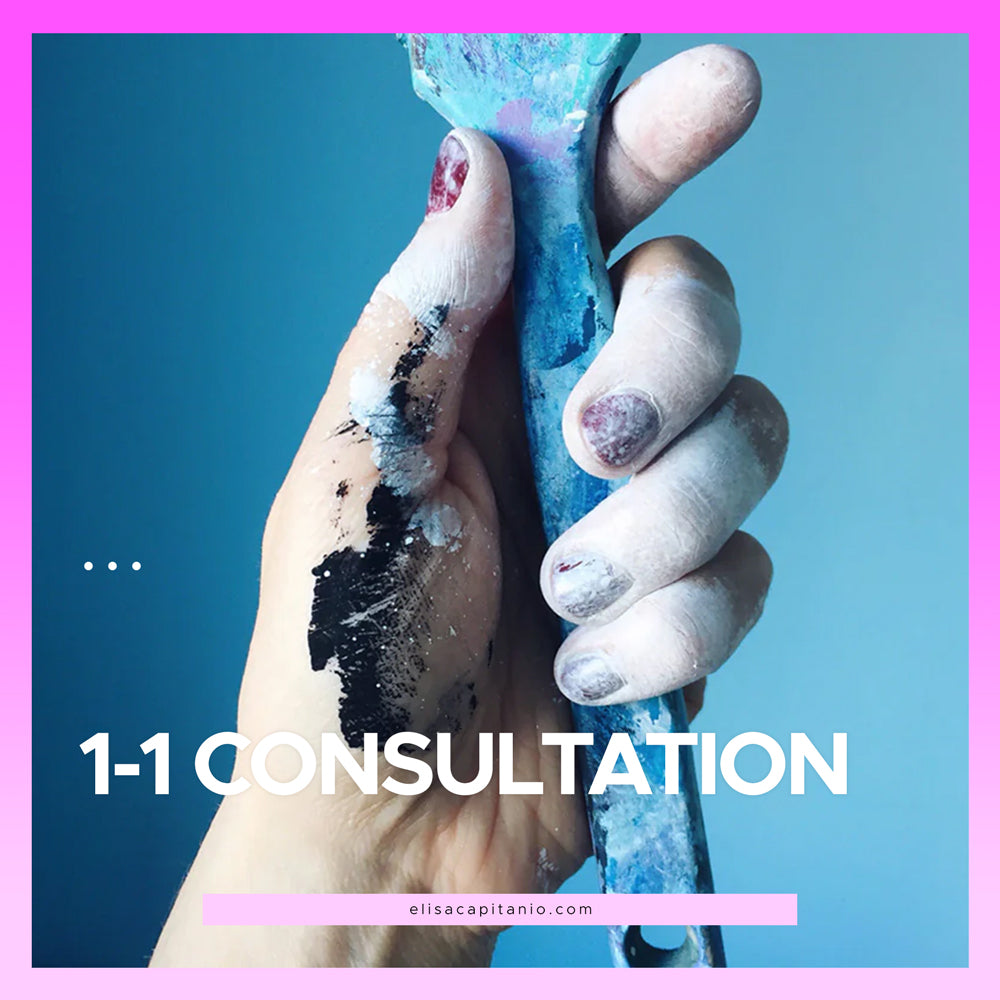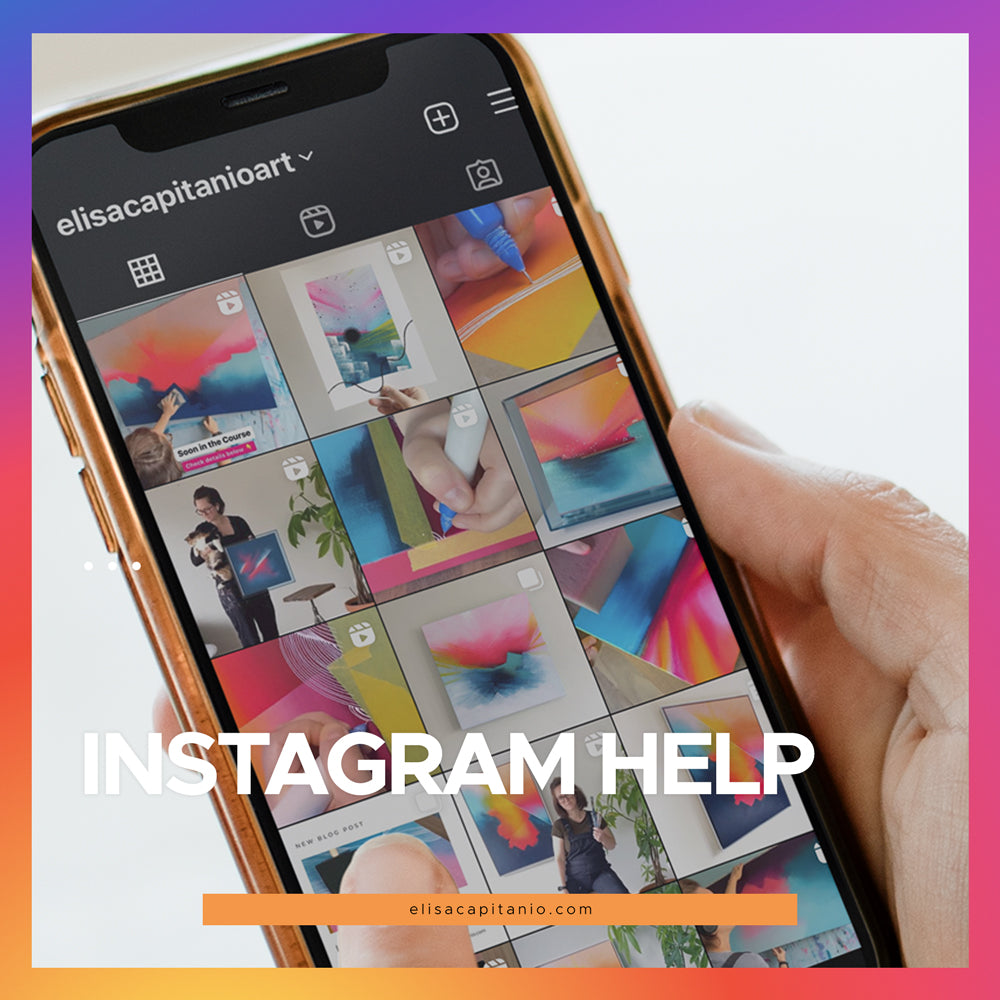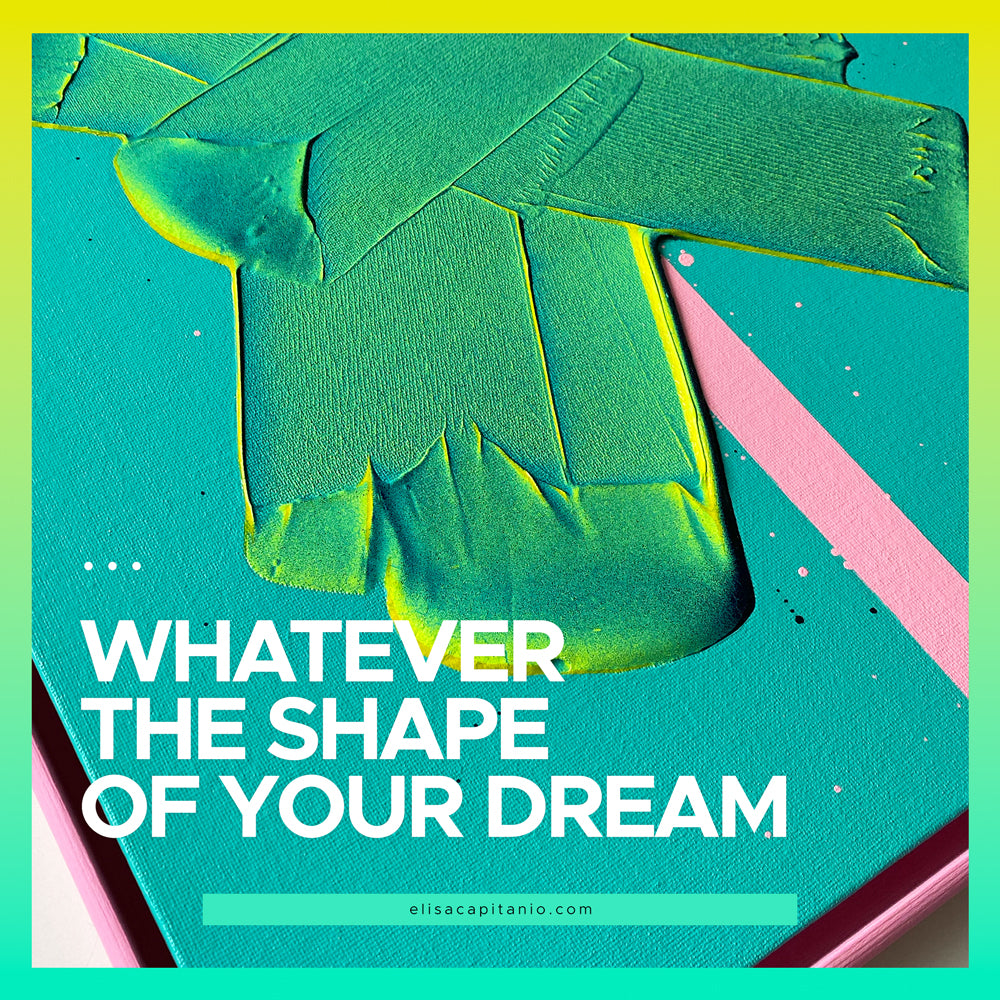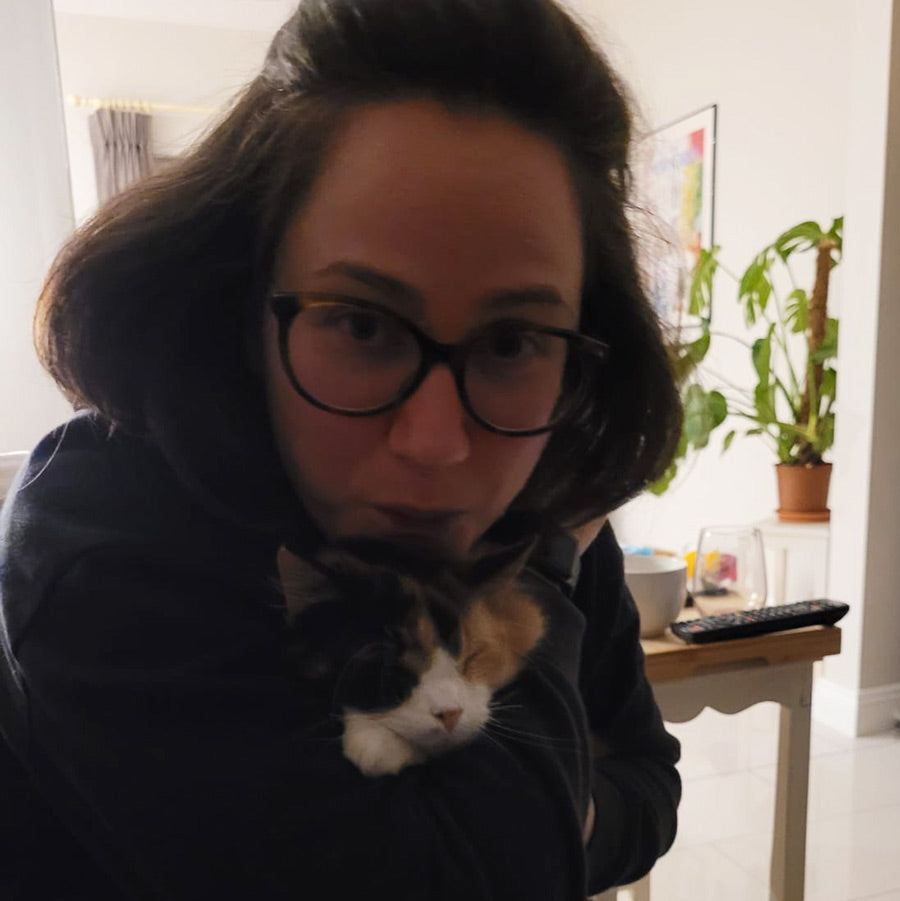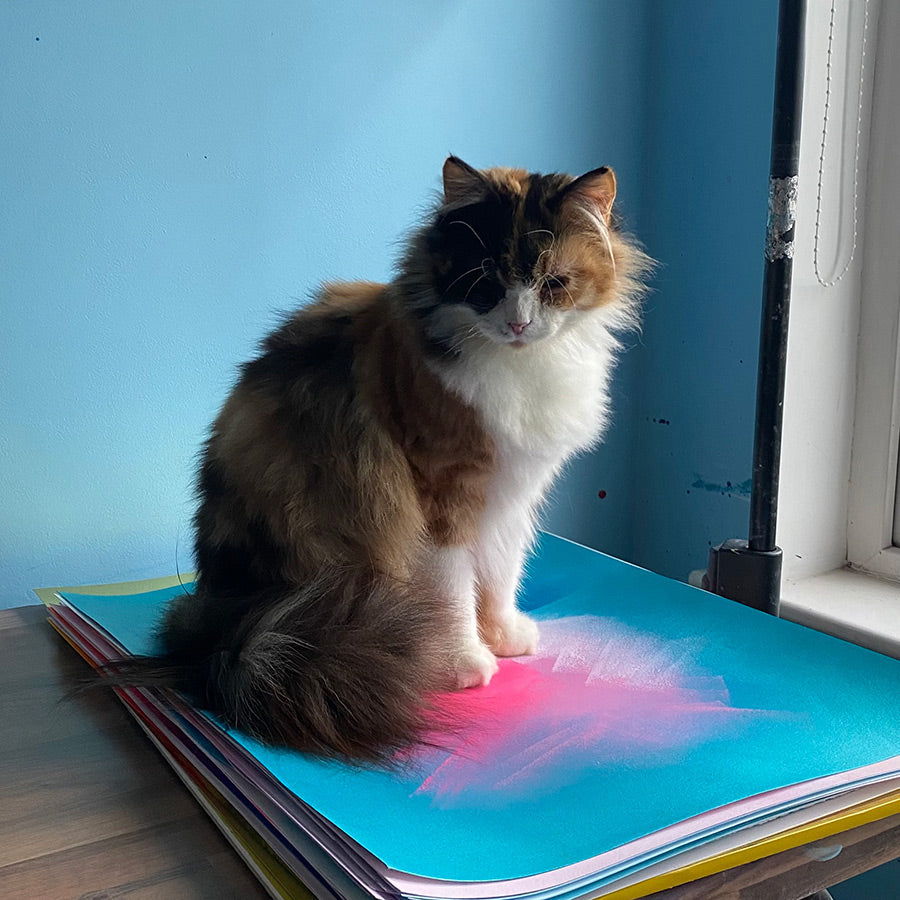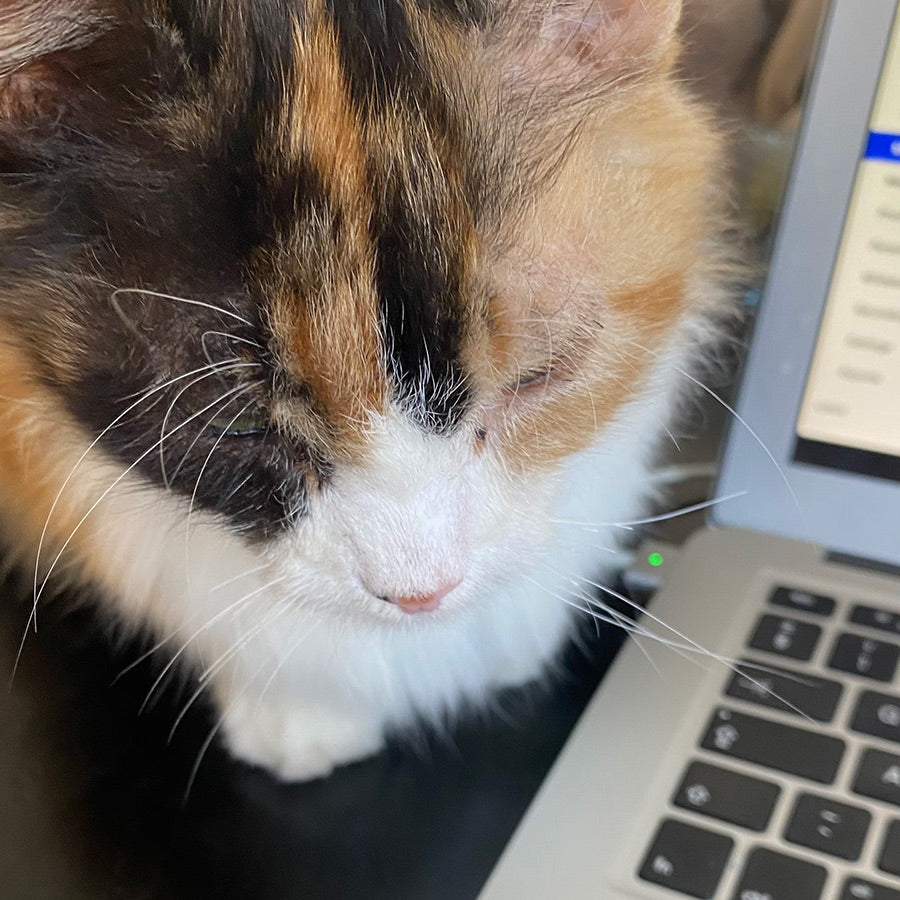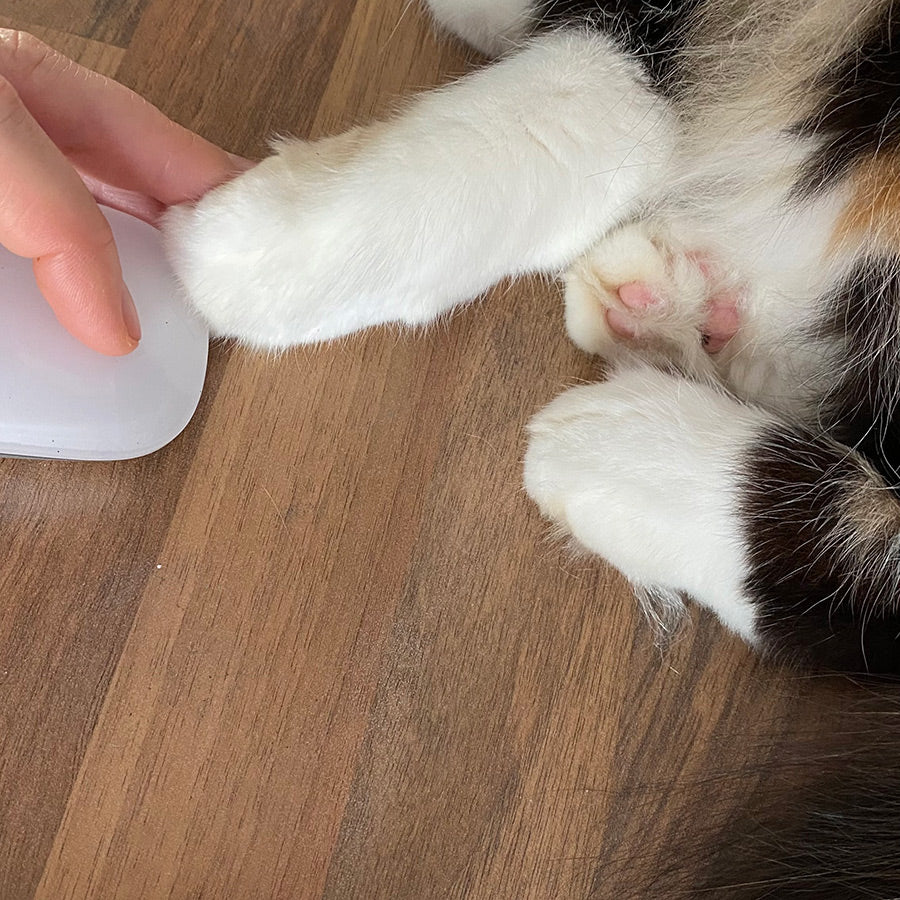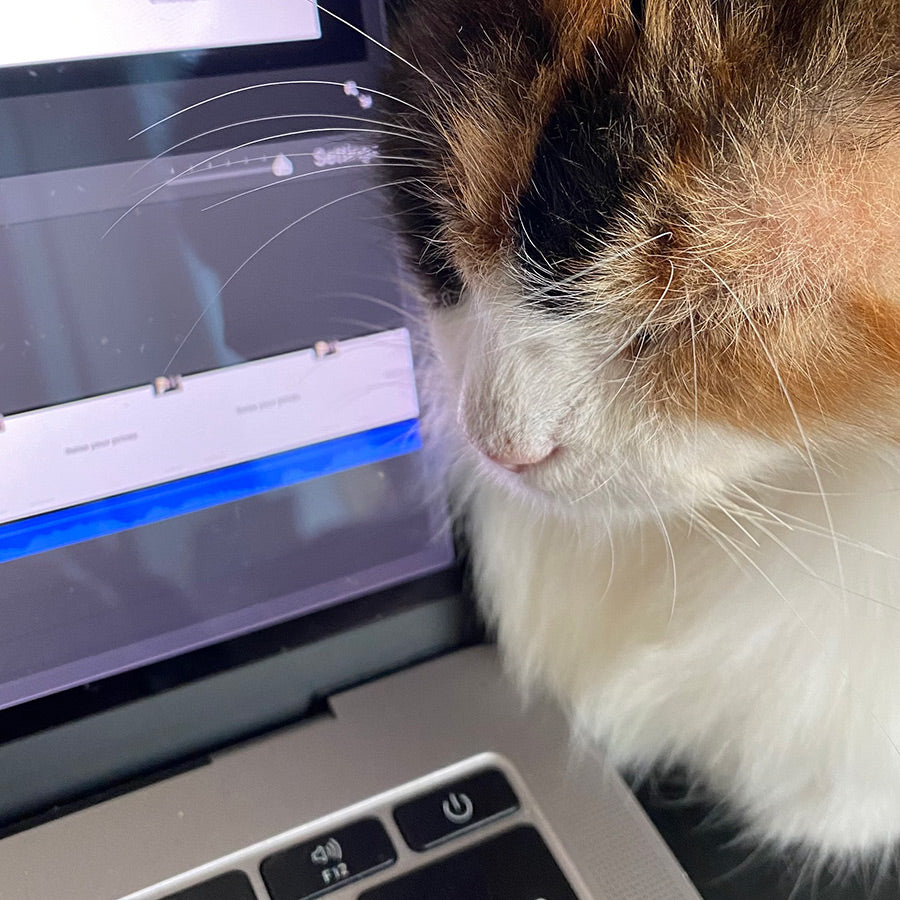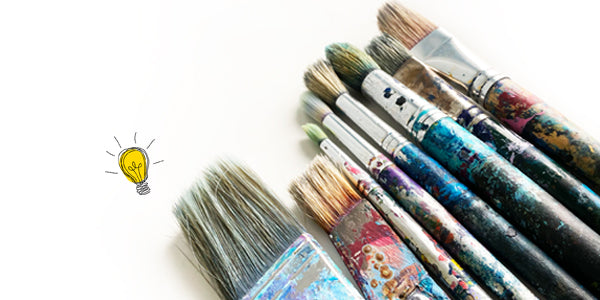
How to bring Innovation into your Creative Process
A while back I asked a question on Instagram. "What would you like to learn?"
The first question coming through my Stories was: "How do you bring innovation into your creative process?"
When I read it I was over the moon.
Talking about how to expand and develop creativity is one of the things I like the most in life.
It got me excited and a million of ideas started popping up in my head, so I had to make myself a cup of tea to calm down. :)
Why do innovation and creativity spark so much happiness in me, you ask?
Maybe you know this about me, maybe you don't... I studied Industrial Design in university and loved every single bit. Those years, deep-rooted in me the passion for looking at things with a different eye.
The most important things that Industrial Design thought me is observation. Think about nature, and how many ideas we borrow from it, in all technology surrounding us.
Like velcro, for example, that was created by observing how burrs stick to dog's hair...
Or if you think about birds and airplanes.
The second most important thing (which intrinsically connected to the first one) Industrial Design thought me, is that materials, properties, colours, designs and so on... are transferrable. You can look at different disciplines and make them collide into your project.
Let's take the velcro example again. Dog's hair sticks to it because burrs have little hooks.
George de Mestral (Velcro inventor) noticed that these hooks were able to catch anything with a loop, such as fur and fabric, and he went on to replicate this synthetically.
I'm talking about velcro, and you are here for art. But really, there's no difference.
Some people would argue that Art and Design are different things. When they in fact are one the extension of the other.
What they have in common is the ability to observe and “borrowing” from other disciplines.
From nature, from cultures, from every day life, from life experiences.
Innovation happens when we cross the border and we learn something new. Innovation is a new made connection.
And because Design and Art work in the same way, I always find easier to talk about common products (things you have had experience with, and maybe you have them in your house), rather than going super abstract into the art world.
How do we go from velcro to your art?
Here below you can find 5 tips that will help you bring innovation into your art process.
And these are tips that go across disciplines, and not only they are based on my own experience as an artist, but also on my studies as Industrial Designer as well as my daily life as Head of Design. Yep my life is full on Art & Design. You can stalk me on Linkedin if you want! :)
I've prepared a deeper-dive 1:1 Creative Innovation brainstorming session, where you'll learn how to take innovation up to 11 :)
However, I don't want to get ahead of myself. You see? I'm so excited about this topic I'm jumping in a million of directions.
But let's focus on the 5 tips for now, and then if you feel like you want to collaborate with me, I'm here!
Let's start, shall we...?
5 tips for Innovation
Be Curious How does this work?
Let's start by saying that being curious is your key to almost anything in life. And I can see that in you. You are one of the curious ones, because you're here, reading about innovation. Yes!
However I didn't want to start these 5 tips with an absolutely generic advice.
Curiosity is an amazing quality to have, however if you want more of it, there's a simple question you can answer yourself: "How does this work?"
And that questions then translates into: "What are the interesting properties of this (insert name of the object/tool you're looking at)?"
I'll give you a brief example.
Let's say you are about to start working on a canvas and want to explore more options and expand the perception of your surface - the canvas...
A canvas is a defined space, and you apply your medium on it, right?
And then what else? How does the canvas work? What are the interesting properties of a canvas?
A canvas, as we said, is a detachable surface you apply paint and/or mediums onto.
What are its properties?
It's made of a durable fabric, it's (most of the time) white, stretched on wooden bars, it defines space, it's a repeatable element, depending on the fabric you can see different textures. Thin or deep edge, a canvas occupies a certain volume of space, it can be framed and so many other characteristics.
Now, if you think about Lucio Fontana's Spatial Concepts or Callen Schuab's spinning canvases, you'll immediately see that the perception of the traditional idea of canvas has shifted.
Fontana promoted the idea of art as gesture or performance, rather than as the creation of an enduring physical work, and he expressed this idea by creating cuts on canvas, blurring the distinction between two and three dimensionality.
Schuab has created a spinning device that, using centrifugal force, makes paint behave in a very different way than if it was simply poured on the canvas.
While you don't have to be a fan of these artists' work, it's undeniable that they were able to see how a traditional canvas can work and then they added their personal touch to it.
I'm not suggesting you go make cuts into your canvas now, - or do, if it makes you happy! - however, in the moment you ask yourself how something works, you start seeing it's qualities/properties. A canvas is not a canvas anymore, it becomes space, it becomes a 3D object, it becomes ... something else.
Let's take another example... a random blue acrylic paint colour.
How does it work? Traditionally you apply paint on a surface with a tool.
What are the properties of this colour?
Is it liquid or dense? Will it go flat or can you create a tridimensional effect with it? is the colour opaque or maybe more glossy? how does it dry up? can you mix it with a medium? or with water? and if so, what results would you achieve? what happens when you apply it with a brush? or your fingers?
As you see, when you ask the right questions you immediately get a ton of answers.
The possibilities are endless. Too many maybe? I'll touch on this in the next point.
Constraints
Asking how something works, can really open up an endless list of characteristics, intersections and more questions.
And while they are all great ideas to have, they can feel like too many. Or they even bringup negative emotions because now you have too many options to choose from.
We don't want that. The strategy here is to remind yourself what's your starting point.
Think about your art practice and what are its constraints.
And constraints here aren't negative, they are limits of space, interest, time and so on...
You have your current process, and that's your solid base.
For example you paint abstract landscapes with acrylic colours.
Then there is your space. Where do you paint?, is it a tiny little corner in your living room or do you paint in a big garden?
For example, if someone asked me to paint a 4meters long artwork I wouldn't be able to do it in my studio, I'd have to paint outside (which comes with challenges in Ireland), or break the art work into different panels.
How much time do you have to create?
10 minutes a day? or 10 hours a day? 1 hour a month?
And then there are the things you're attracted to but, for different reasons, aren't part of your practice.
Let's say you like very bright colours but always stuck to a natural palette. You love sculptures in wood but never tried working with wood. And then you also love human figure drawings but never took a class.
These are your limits. We do what interests us. We do what we put our energy into.
And I want to say it again, limits are a good thing here. They define your zone of interest, what you're attracted to.
I'll give you a brief example.
I can draw human figures, I'm not a natural at it, but I can do it. I always loved human figures drawings, studies and images of the body.
A couple of years ago, I also took a class to improve my skills and develop my technique.
It was a great class. However... it was in the evening, after a long day at work. And after the class I had 1 hour journey to get home. Once home, or in the weekend, I never practiced my learnings from the course.
You already know where this is going, right...? I never integrated human drawings into my practice and - let's be honest - probably, I never will.
Because, even though I like to look at them, I never took the actual time to experiment.
No shame in that, no negative feelings. It's a fact, and I'm ok with it.
Energy flows where energy goes. And vice versa, energy goes where energy flows.
I don't draw humans, however, there are certain things that I do want to bring into my art practice.
And those are the things we do naturally work for. Because they simply feel right.
Thinking again about the human figure drawing class example, if it had felt the right thing to do for me, I would have applied myself, I would have drawn in my spare time, and more and more.
And that's how you...
Create a Bridge
Aka, Investing Time in What Feels Right.
There are certain things we are good at, then there is what we want to do and we'll get to do, there is what we want to do and never really do, and then there are things we have no interest in.
I like to call this part of the process "Create a Bridge" because that's what it feels like to be putting two different things together. And only once you do unite two separate things, you find your connection. Your bridge. Your innovation.
Unless you already have a super clear idea of what you want to try, the best way to Create your Bridge is to...
Steal Like an Artist
If you aren't familiar with the book "Steal Like an Artist", I suggest for you to give it a read, it's such an interesting and funny little book!
Austin Kleon wrote it as a manifesto of all the things he wished he knew when it comes to creativity.
It's a light read, and it definitively highlights how important it is to look at what other people are doing in order to learn how to make it your own.
There are two kinds of stealing, one is good and the other one is bad.
The bad one is imitation, copying from one artist, ripping off someone else's work without digging more into why they do what they do.
The good kind of stealing is mixing your own idea with the study of someone else's work. It's looking at what other people do and transform it into your own.
The reality is that everybody steals. And the good way to do this is to find something that you like, find that painting, that design, that artist... whatever, and figure out who inspires them.
And then take all that inspiration and look past the work itself into why did these artists make their own creative decisions.
Once you have all of that, which to be completely honest doesn't need too much work - it just makes you go beyond a single piece of art, you are actually stealing like an artist. The output of what you're going to make, is going to be more from your perspective rather than a copy of that artist's work.
A big part of the book "Steal Like an Artist", is the fact that it gives you confidence to start doing stuff right now, start working on your idea now. Do not wait around until you think something is perfect, or you do have the "right" tool, or the "perfect" space.
Don't wait until you think you're ready, just start now, start stealing from artists you admire and create a bridge with your own process, methods, artistic process.
Just start and go beyond the imperfections, go past the tiny mistakes. Keep working, and keep refining your new idea until you're confident with it.
Imperfections do actually help us defining what we like and what we don't like and they allow us to create a personal style.
The last thing I like about this book is that it encourages you to put in the time, to put in the work. I love social media and the exposure you get to so much art and creativity, however what we don't see are the countless hours of honing that specific skill.
Creativity doesn't come from nothing, it's generated by the energy you put in it.
And now? After you've asked yourself all the right questions and have identified constraints and bridges. After stealing and all the learnings that come from that... what do you do?
Get out
You get out. Go for a walk.
This might sound like the most generic suggestion, but it's not. And here's why.
Innovation comes from outside your own head and your own body. No writer ever gets inspired by sitting at their desk and staring at a blank page.
You need to get out and experience the world.
Innovation comes from looking at what is outside of your sphere of knowledge. It’s outside your own head, your home and your routine.
I’m not suggesting you go have some weird experiences - or do, who am I to tell you what to do, right? :) - what I’m saying is that your creativity is very much in touch with where your body is, what your body experiences, so go out and explore.
Have you ever noticed how your “Eureka” moments usually happen when you’re on the go?
Go for a run, a nice walk in a garden you’ve never been to, or if you’re feeling more adventurous a hike could be a good idea.
Get that beautiful body of yours moving and away from the usual paths.
Talk to a stranger, travel, explore the outside world.
Something else to try, if you can't get out, is gentle repetitive work that isn't brain intensive... like washing dishes, or gardening, or cleaning your car.
I used to get tons of ideas while doing the dishes. Now that I have a dishwasher, I do not miss doing the dishes, however I miss those creative moments, filled with ideas and thoughts.
You could make the argument that, with moving your body (or dish washing), you might get too many unstructured ideas, but that's why you have a full process of 4 robust points before. So when you get out for your walk, you can think about how that thing works, how your abstract painting can expand into something more.
I hope you found this post interesting and inspiring. Which one of these 5 tips resonated with you the most?
As mentioned at the beginning of the post, I have a ton of tips on how I can help you to find ideas that work for you. Specifically for your process.
And nothing would make me happier than being able to help you out. I don’t want to give you only 5 tips and wish you good luck, if you what you need are some actionable steps.
Here I wanted to give you the method that will help you find the best innovation in your own process.
But what's next? What are the right questions to ask yourself? How can you expand innovation without getting lost in a sea of ideas?
Do you want learn practical ways on how to bring innovation into your art practice?
Yes?
Then the 1:1 Creative Innovation is for you.
During the time together you’ll learn the questions to ask yourself on how to bring newness into your process.
I will show you my process when approaching new tools and how innovation works in my studio.
This is a private consultation, so this means it will be tailored on your own needs!
I'm offering 1 hour in depth brainstorming session, where we'll analyse your starting point, evaluate a bunch of ideas and how to get you there.
It's a very dynamic and dense conversation, and you'll get out of it with clear actions to take to bring your art to the next level.
Looking forward to chatting with you!
